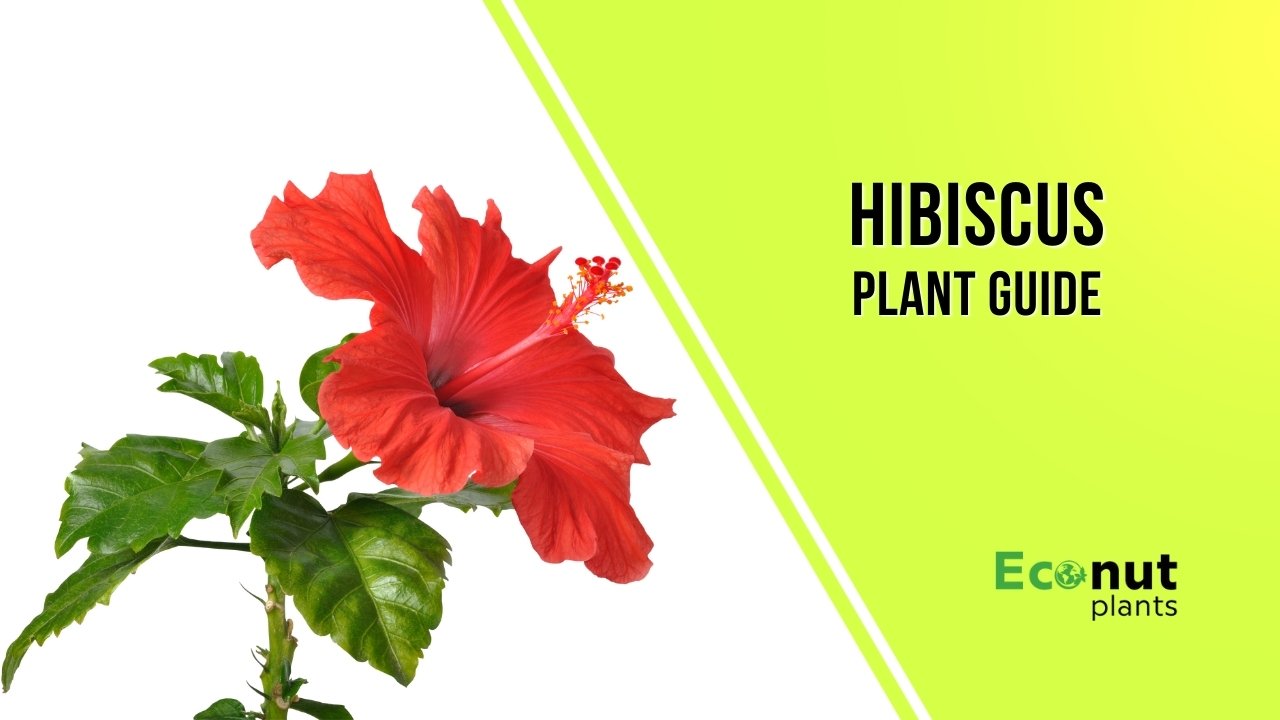Hibiscus, also known as Gudhal, is a blooming plant that is usually referred to as China rose. Rose Mallow is a less common name for Hibiscus, which is also known as Japa in Ayurvedic writings. It is an evergreen plant that grows to a height of 150-270 cm.
The leaves are alternating, with an ovular shape (sometimes called ovate to lanceolate) with a toothed or lobed edge. The blooms are trumpet-shaped and big. A flower with five or more petals is 4 to 18 cm in diameter.
Flowers come in a variety of colours, including white, pink, red, orange, peach, yellow, and purple. Its fruit is a five-lobed dry capsule with several seeds in each of the five lobes. These are red and white in colour and are discharged when the capsule dehisces (splits open) at maturity.
Apart from glucose, xylose, mannose, and rhamnose, the plant contains citric, malic, tartaric, and hibiscus acids. Hibiscus plant comes in two types:
Tropical – only grows for a portion of the year due to their inability to withstand freezing temperatures.
Perennials, which thrive all year, require less maintenance and are less demanding than tropical varieties.
In Indian rituals, hibiscus blossoms are also presented to Durga Mata, a Hindu Goddess, and Lord Ganesha. This evergreen plant is a treasure trove of nutrients and health benefits. The most valuable type of Hibiscus is Hibiscus Sabdariffa, which has distinctive red blossoms and is frequently utilised for medicinal purposes.
Uses of Hibiscus (Gudhal) Plant
- Flowers or the plant itself can be used as a decorative element in a house or yard.
- Its aromatic blossoms have been used in fragrances and sachets for centuries.
- In Africa, this herb has been used to alleviate constipation.
- As a jute alternative, H. Tiliaceus fibre has been used to create ropes.
- Its fleshy crimson calyx is used to make jams, jellies, cold and warm teas, and other beverages.
- The flowers were utilised by Egyptians to reduce fever and promote diuresis (increased excretion of urine).
- It’s used to treat heart and neurological problems.
- Tea and hibiscus extracts can help to decrease cholesterol and blood pressure.
- Hypertension is treated using this herb.
- Prevents the production of kidney stones.
- It’s used to keep weight off since it reduces glucose and starch absorption from the intestines. Hibiscus extracts
- are suggested to lower central obesity by preventing fat formation in the liver.
- In certain locations, the tender buds of this plant are employed as a contraceptive.
- When combined with buttermilk, it is used to cure bleeding piles.
- It’s used to manage diabetes.
- To cure head lice, a tropical form of Hibiscus is utilised in a herbal preparation.
Hibiscus Plant – Planting & Care
- SUNLIGHT:
Flowering requires at least five to six hours of direct sunshine every day, and plants thrive in strong light. For growing Hibiscus, the soil should be well-drained and rich with organic matter.
- IRRIGATION:
When the top soil (1-2 inch) in the pot feels dry to the touch, water the plant.
The plant should not be overwatered.
In the summer, water fully; in the winter and rainy season, water less.
- FERTILIZER APPLICATION:
Feed the plant with organic fertiliser once a month throughout the main growing season (August-December).
Loosen the dirt without disturbing the plant’s roots so that it may easily absorb nutrients and moisture.
- PLANT PROTECTION:
Remove any plant components that are dead, diseased, or damaged and throw them away from the plants.
You can use Neem oil, Eucalyptus oil, or Citrus oil spray as a primary therapy for any insect assault or ailment.
- THE DONT’S:
The plant should not be overwatered.
Water should not be applied to flowers or foliage since it may promote fungal infection.
HIBISCUS CARE:
- Initial care for the first two weeks after getting the plant at your site is as follows:
- Before watering the soil, make sure it’s dry.
- If the soil is dry, stick your finger in it and water it.
- Keep the plant in a bright, direct light source.
- After getting it, wait at least 2 weeks before repotting it.
CONCLUSION:
Hibiscus is a gift to humankind, since it has a plethora of beneficial medicinal qualities and chemicals. Hibiscus leaves or blooms have been used for medicinal purposes from ancient times, particularly during the Ayurvedic period. It is used to cure a variety of health problems and to promote overall wellbeing in raw, extracted, and powdered form.
When drank as a tea in the morning, the rich nutritional value of Hibiscus Flower, leaves helps to clean blood toxins and enhance immunity. However, there is a paucity of scientific information on hibiscus, despite the fact that it is a natural wonder. As a result, the use of a safe dosage of this natural herb is always advised.

